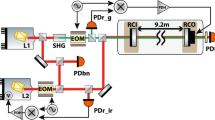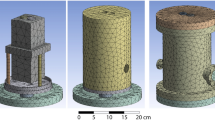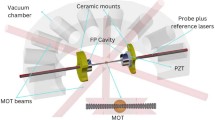Abstract.
The recent upgrades of the Advanced Virgo experiment required an update of the locking strategy for the long, high-finesse arm cavities of the detector. In this work we will present a full description of the requirements and the constraints of such system in relation to the lock acquisition of the cavities; the focus of this work is the strategy used to accomplish this goal, which is the adaptation and use of the guided lock technique, which dynamically slows down a suspended optical cavity in order to make the lock possible. This work describes the first application of such locking technique to 3km long optical cavities, which are affected by stringent constraints as the low force available on the actuators, the high finesse and the maximum sustainable speed of the cavities, which is quite low due to a number of technical reasons that will be explained. A full set of optical time domain simulations has been developed in order to study the feasibility and the performance of this algorithm and will be throughout discussed, while finally the application on the real Advanced Virgo’s arm cavities will be reported.
Similar content being viewed by others
References
F. Acernese et al., Class. Quantum Grav. 32, 024001 (2015)
The Virgo Collaboration, Advanced Virgo Technical Design Report (2012)
The Virgo Collaboration, Advanced Virgo Baseline Design (2009)
LIGO Scientific Collaboration and Virgo Collaboration (B.P. Abbott et al.), Phys. Rev. Lett. 119, 141101 (2017)
LIGO Scientific Collaboration and Virgo Collaboration (B.P. Abbott et al.), Phys. Rev. Lett. 119, 161101 (2017)
J. Camp et al., Opt. Lett. 20, 2463 (1995)
H. Yamamoto et al., J. Phys. Conf. Ser. 32, 398 (2006)
H. Yamamoto, E2E time-domain optical simulator, http://ligo.caltech.edu/~e2e/
A. Franzen, ComponentLibrary (a vector graphics library for illustrations of optics experiments), available online at http://www.gwoptics.org/ComponentLibrary/, licensed under a Creative Commons Attribution-NonCommercial 3.0 Unported License
R.W.P. Drever et al., Appl. Phys. B 31, 97 (1983)
E.D. Black, Am. J. Phys. 69, 79 (2001)
L. Barsotti, The Control of the Virgo Interferometer for Gravitational Waves Detection, PhD Thesis, Università degli Studi di Pisa (Pisa, Italy, 2006)
K. Izumi et al., Appl. Opt. 56, 5470 (2017)
B. Gustavsen, A. Semlyen, IEEE Trans. Power Deliv. 14, 1052 (1999)
T.T. Lyons, M.W. Regehr, F.J. Raab, Appl. Opt. 39, 6761 (2000)
M. Rakhmanov, Appl. Opt. 40, 6596 (2001)
S. Hild et al., Class. Quantum Grav. 26, 055012 (2009)
Author information
Authors and Affiliations
Corresponding author
Rights and permissions
About this article
Cite this article
Bersanetti, D. Application of the guided lock technique to Advanced Virgo’s high-finesse cavities using reduced actuation. Eur. Phys. J. Plus 133, 62 (2018). https://doi.org/10.1140/epjp/i2018-11920-5
Received:
Accepted:
Published:
DOI: https://doi.org/10.1140/epjp/i2018-11920-5




